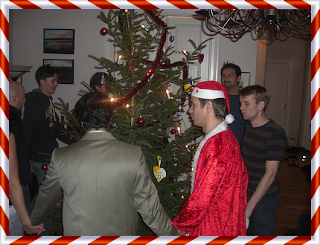Kristiansten Fortaleza es una fortaleza situada en Trondheim. La fortaleza fue construida en 1682-1684 por orden del rey Christian V, como parte de la reconstrucción del Trondheim, después de un incendio 18 abril 1682. El diseño de la ciudad y fortalezas fueron realizados por Johan Gaspar de Cicignon y el Intendente General Anthony Coucheron. La torre principal de Kristiansten es una extensión directa del eje longitudinal de la Catedral, ca. 700 metros de distancia. En la década de 1700, fue Kristiansten ampliada a la forma que tiene hoy en día.
Kristiansten Fortress is a fortress located in Trondheim. The fortress was built in 1682-1684 as part of reconstruction after fire 18 April 1682 by order of King Christian V. The design of the town and fortresses were performed by Johan Caspar de Cicignon and Quartermaster General Anthony Coucheron. The main tower Kristiansten is a direct extension of the Cathedral's longitudinal axis, ca. 700 meters away. In the 1700s, was Kristiansten extended to the form it has today.

La fortaleza está construida sobre una colina de gran importancia estratégica por encima de Bakklandet, Pappenheim y Möllenberg. Desde esta colina habian los suecos dos veces anteriormente controlado la ciudad, en 1564 y 1658. El puente viejo cruza el rio Nidelva y une la cuidad con Bakklandet, y cuando la fortaleza fue construido, el puente era la entrada principal de Trondheim. Habian previsto fortificaciones para defender esta parte de Trondheim ya en 1676, pero era el fuego hizo que los planes fueron puesto en marcha.
The fortress is built on a strategically important hill above Bakklandet, Pappenheim and Møllenberg. From this height the Swedes had twice previously controlled the city, in 1564 and 1658. Old Town Bridge crosses the river Nidelva from Bakklandet, and when the fortress was built, the bridge was the main entrance to Trondheim. It was planned fortifications to defend this side of Trondheim in 1676 already, but it was the fire that made the plans to fruition.
La puerta principal de 1746 The main entrance from 1746
La primera piedra de la fortaleza fue puesta por Cicignon en julio de 1682, y luego dirigió la construcción Coucheron en los siguentes años. La fortificacion se suponia simétrica al respecto a la torre principal en forma de estrella, pero se ha adaptado al terreno en una forma de estrella irregular con nueve puntas.
The foundation stone of the fortress was laid by Cicignon in July 1682, and the construction was led by Coucheron in later years. The fortifications were supposed to be symmetric star-shaped form around the main tower, but was instead adapted to the terrain in an irregular star shape with nine points.
La vista sobre la cuidad de la fortaleza The wiew over the city from the fortress
La torre principal de piedra pintadas de blanco con un techo de cuatro aguas, es grande y monumental y un punto de referencia de Trondheim. Originalmente, la torre tenía una superficie de 17 x 12,5 metros, pero el espesor de la pared que daba a la ciudad luego se incrementó en 2,5 metros. Ahora debería ser de cuatro metros de espesor. La torre tiene tres pisos por encima del sótano donde se guardaba la polvora. El sótano contenía originalmente dos cámaras de polvora, cubiertos con una bóveda de ladrillo sólido. La primera planta se utilizó para la residencia del comandante y tenía una sala de estar, cocina y dos cámaras. El segundo y tercer piso era pisos para los cañonenes con las vigas reforzadas. Las aberturas para disparar estaban cubiertas con puertas de hierro. El piso superior se construyó un arca, que fue utilizado como puesto de observación.
The main tower of whitewashed stone with a hipped roof, is large and monumental landmark of Trondheim. Originally the tower had a footprint of 17 x 12.5 meters, but the thickness of the wall of the city was later increased by 2.5 meters. It should now be four meters thick. The tower has three floors above the basement where they stored the gunpowder. The basement originally contained two gunpowder chambers, covered with a solid brick vaults. The first floor was used for commander's residence and contained a living room, kitchen and two chambers. The second and third floor was the canon floors with reinforced beams. The shootings openings were covered with iron gates. The top storey was built an ark, which was used as a lookout post.
La antigua casa del comandante convertido en café
The old comandants house has become a coffee shop
En el interior de la fortaleza Inside the fortress
Aquí mataron los alemanes en la segunda guerra mundial a compatriotas noruegos.
Here is the place where the germans killed norwegians during the second worl war.
Los antiguos cañones. The old canons.
La fortaleza por la parte de detras. The fortress seen from behind.
En el interior de la fortaleza. Inside the fortress.










































